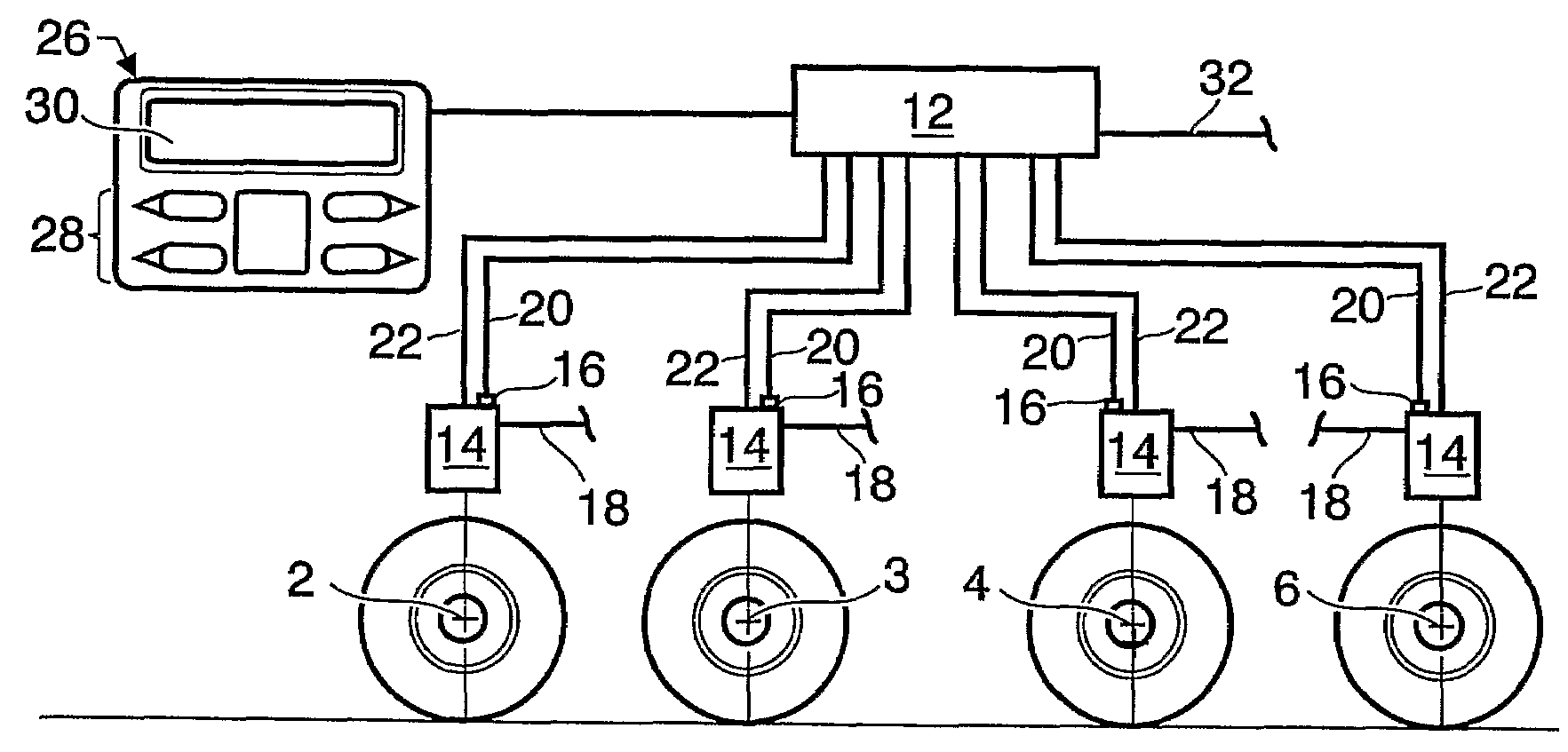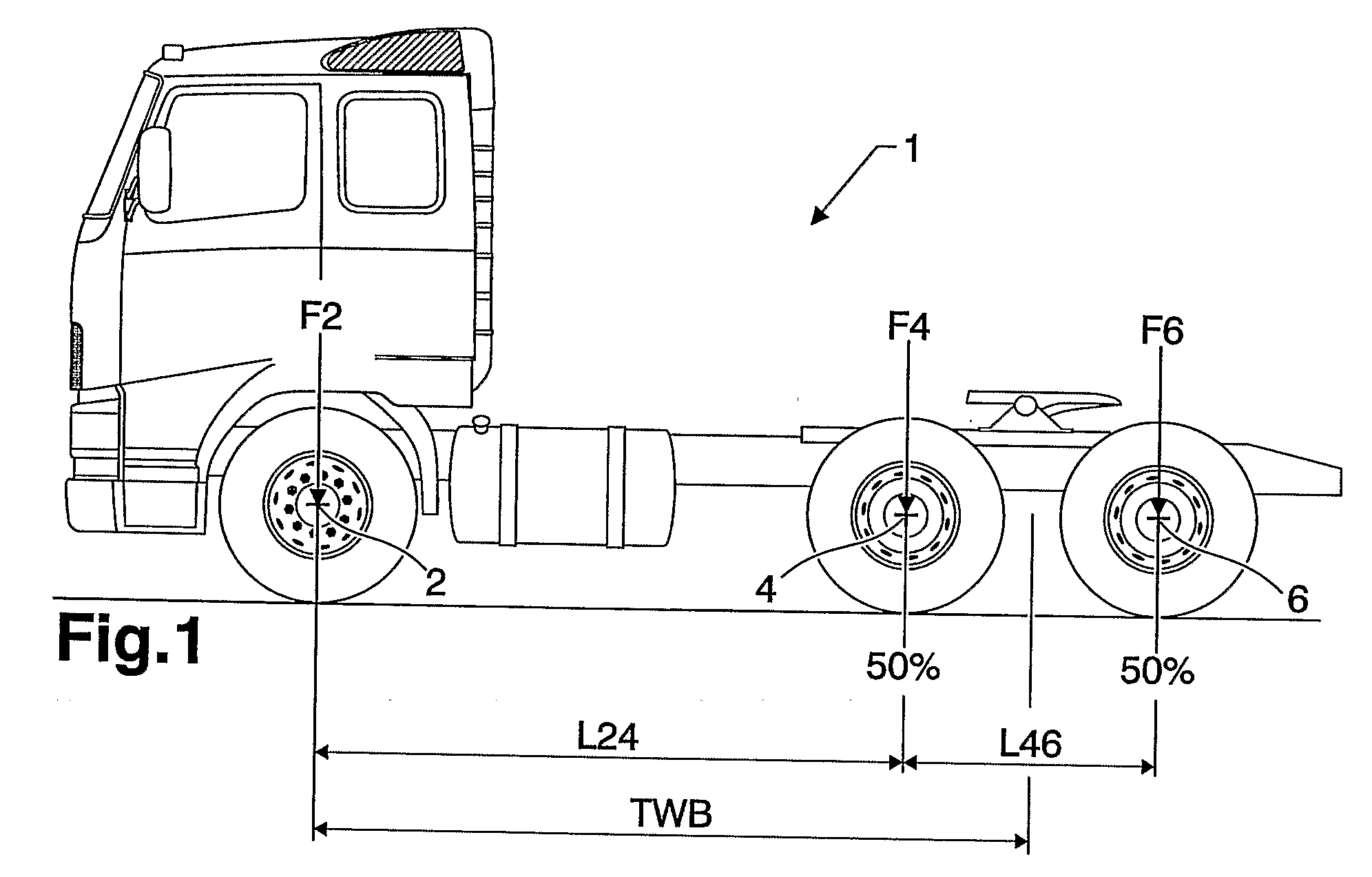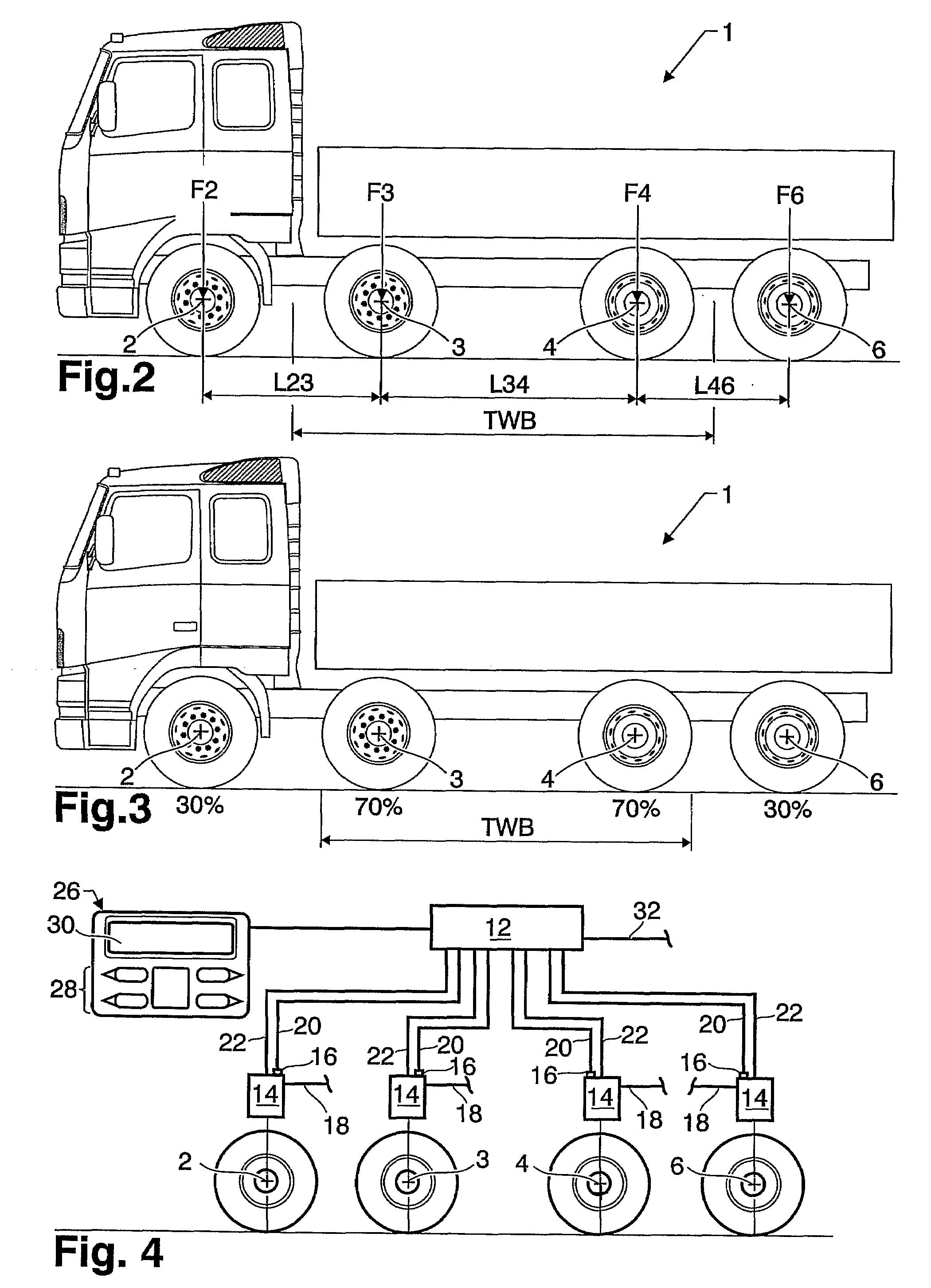System and Method for Controlling the Axle Load Split Ratio on a Vehicle With Two Front Axles
a technology of axle load and split ratio, which is applied in the direction of transportation and packaging, cycle equipment, instruments, etc., can solve the problems of increasing the turning radius, increasing adding temporary limitations to the transferable load between, so as to minimise improve the handling of the vehicle, and reduce the risk of one or more axle overload
- Summary
- Abstract
- Description
- Claims
- Application Information
AI Technical Summary
Benefits of technology
Problems solved by technology
Method used
Image
Examples
Embodiment Construction
[0040]FIG. 1 illustrates a known vehicle with a theoretical wheelbase denoted TWB. The vehicle 1 is equipped with a front axle 2 and a bogie with two rear axles 4, 6. The theoretical wheelbase TWB is calculated depending on the load split between the axles. The general equation for the theoretical wheelbase, TWB, for such a vehicle is:
TWB=I24+(F6*I46) / (F4+F6)
[0041]where I24 and I46 are the distances between the first and second axles 2, 4 and the second and third axles 4, 6, respectively. F4 and F6 are the loads on the second and third axles 4, 6, respectively.
[0042]In FIG. 1 the load split between the rear axles 4, 6 is 50 / 50 which means that the theoretical wheelbase is the distance from the front axle 2 to midway between the rear axles 4, 6. This later point may be referred to as the theoretical rear axle centreline. By changing the load split ratio between the rear axles, the theoretical wheelbase can be altered. On a vehicle where the rearmost axle is a liftable, the theoretica...
PUM
 Login to View More
Login to View More Abstract
Description
Claims
Application Information
 Login to View More
Login to View More - R&D
- Intellectual Property
- Life Sciences
- Materials
- Tech Scout
- Unparalleled Data Quality
- Higher Quality Content
- 60% Fewer Hallucinations
Browse by: Latest US Patents, China's latest patents, Technical Efficacy Thesaurus, Application Domain, Technology Topic, Popular Technical Reports.
© 2025 PatSnap. All rights reserved.Legal|Privacy policy|Modern Slavery Act Transparency Statement|Sitemap|About US| Contact US: help@patsnap.com



